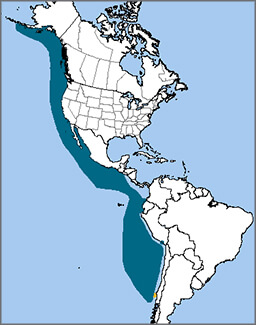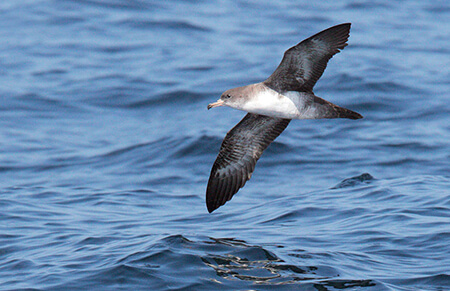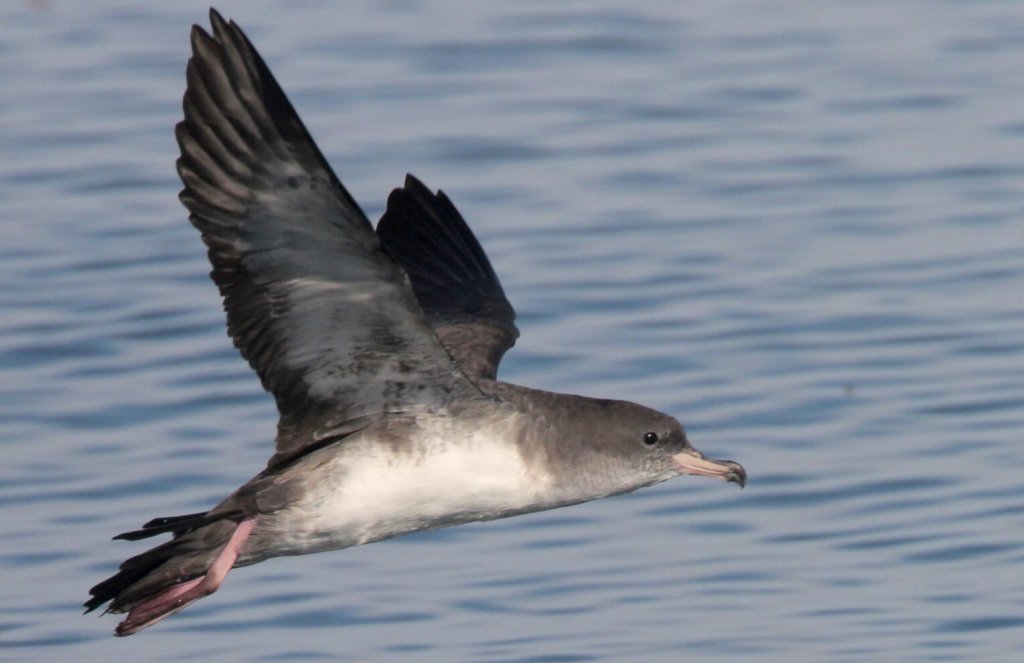 Flying over the Pacific Ocean, sensing every movement of the wind and waves, Pink-footed Shearwaters are finely attuned to the world around them. These ocean-going birds are frequently far from human civilization, and as the old saying goes, “out of sight, out of mind.” Most people will never see a Pink-footed Shearwater, since the birds breed only on three islands off of Chile and spend most of their lives at sea.
Flying over the Pacific Ocean, sensing every movement of the wind and waves, Pink-footed Shearwaters are finely attuned to the world around them. These ocean-going birds are frequently far from human civilization, and as the old saying goes, “out of sight, out of mind.” Most people will never see a Pink-footed Shearwater, since the birds breed only on three islands off of Chile and spend most of their lives at sea.
Fishery Fatalities
Fishermen are probably among the people most familiar with this bird. Shearwaters tend to follow fishing boats in search of an easy meal. Since these birds feed by shallow dives or by grabbing food from the water's surface, they're at risk of being hooked or tangled in fishing gear. In addition, since they feed mostly on fish and squid, overfishing by humans means less food for birds.
Among other efforts, our resource to reduce fisheries bycatch is intended to help reduce the accidental capture of this and other seabirds.
Seabirds in Danger
On land, their nesting habits—within a network of underground burrows—makes them vulnerable to introduced predators such as rats and cats. They face competition from rabbits, another species imported from elsewhere that often out-competes the shearwaters for breeding burrows.
Sign up for ABC's eNews to learn how you can help protect birds
Oil spills, marine plastic pollution, and climate change are also threats.

The ocean-going Pink-footed Shearwater breeds only on three islands off the coast of Chile. Photo by Tom Grey
Travels of the Tubenose
The Pink-footed Shearwater is part of an order of seabirds nicknamed “tubenoses” for the pair of bony tubes on their upper bills. These specialized tubes filter and excrete salt, which allows them to drink seawater.
The ability to drink salt water is an important feature for such a far-flying seabird: After their chicks fledge, Pink-footed Shearwaters migrate north along the west coast of the Americas as far as Alaska and spend the nonbreeding season at sea.
Strategy for Pink-footed Shearwater
The largest population of Pink-footed Shearwaters is found on Isla Mocha, Chile. Smaller colonies exist on Robinson Crusoe and Santa Clara islands in the Juan Fernández Archipelago. ABC's Seabirds Program is working with local communities and partners, including Oikonos Ecosystem Knowledge, to ensure the species' survival. One priority is to reduce chick harvesting on Isla Mocha, where the young birds are considered by some to be a good source of food.
Another effort aims to restore critical breeding habitat in the Juan Fernández Islands by removing rabbits and reducing the number of free-roaming cats.
We're also collaborating on a satellite tracking project that follows tagged Pink-footed Shearwaters on their epic flights, which is helping to pinpoint foraging areas and migration routes, as well as the impact of the birds' interactions with fisheries.
Get Involved
We welcome all and every effort to help us "bring back the birds." If you would like to make a donation, please click here. Or visit our Get Involved page to learn more about how you can help. Together, we can make a difference for this special bird.
Donate to support ABC's conservation mission!



















































